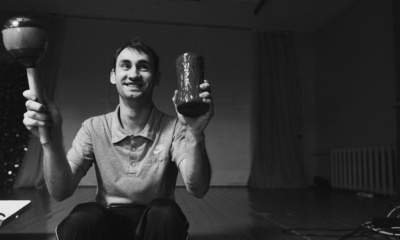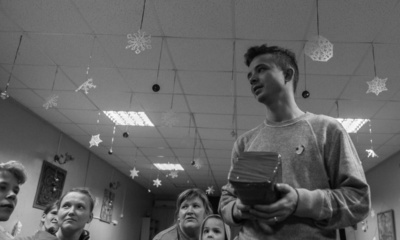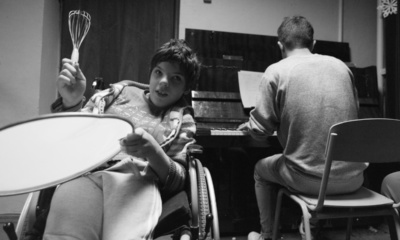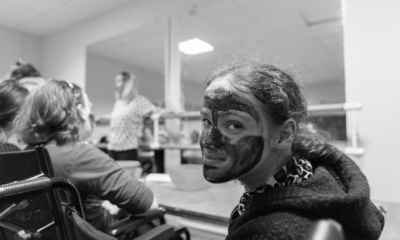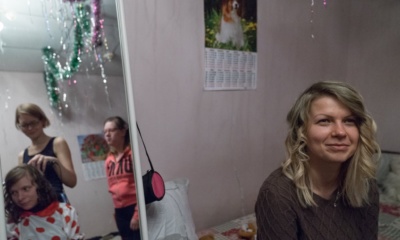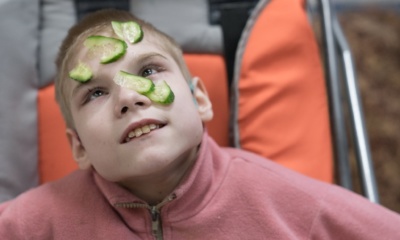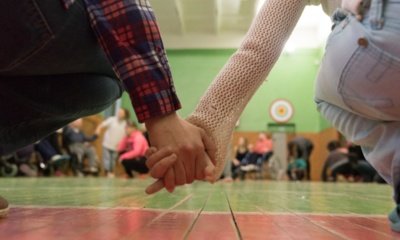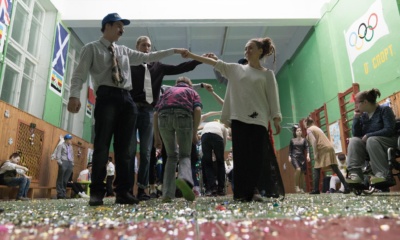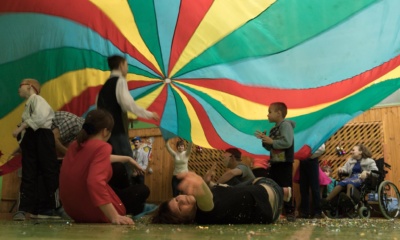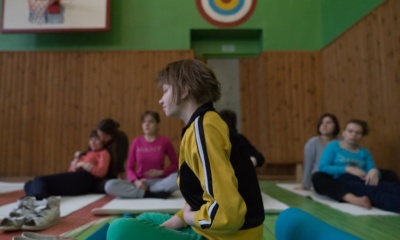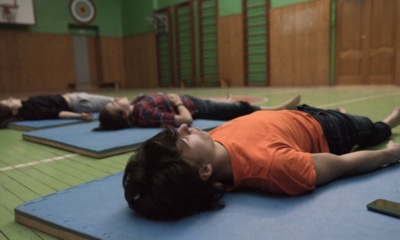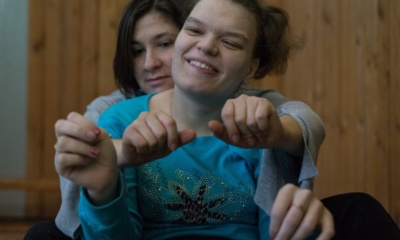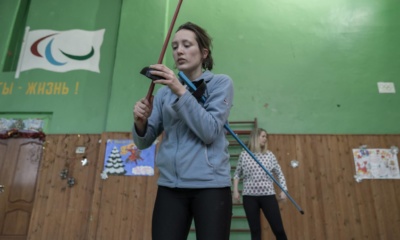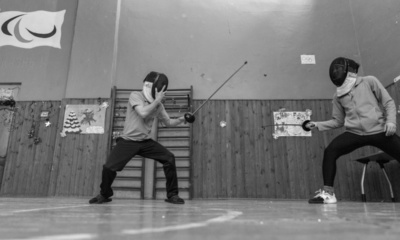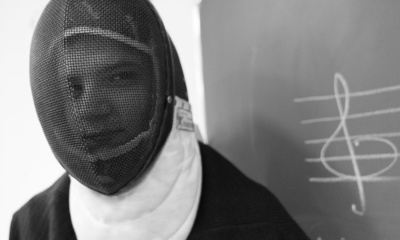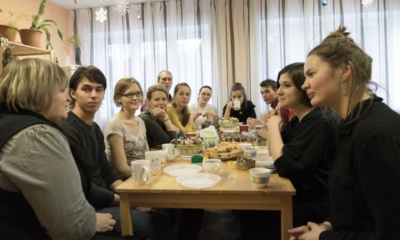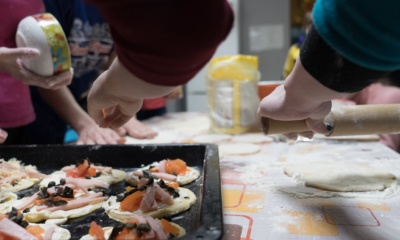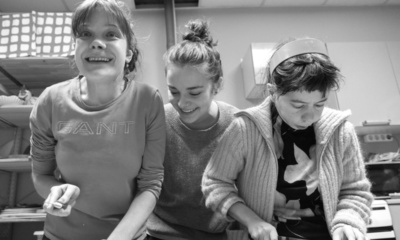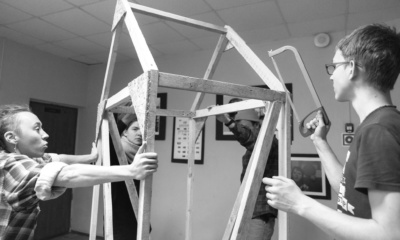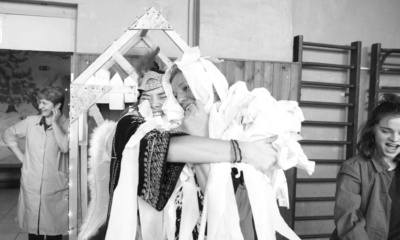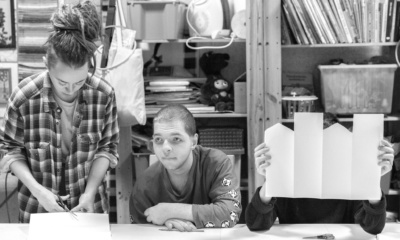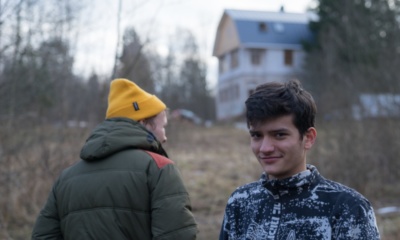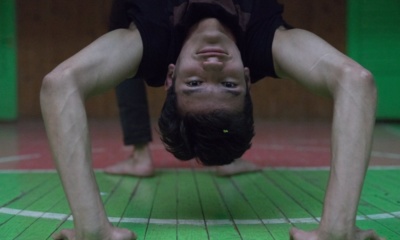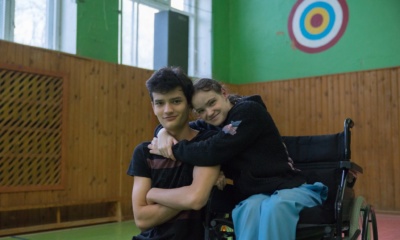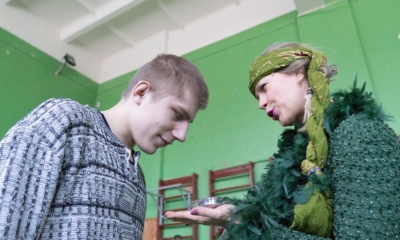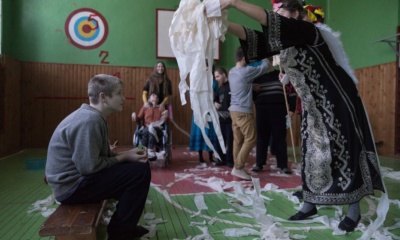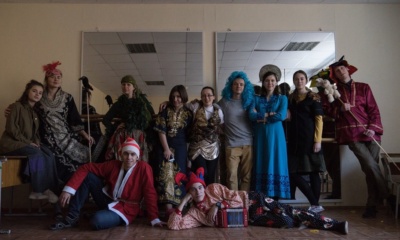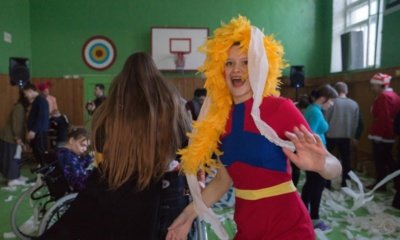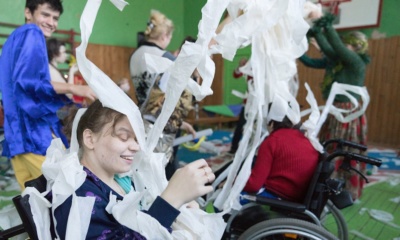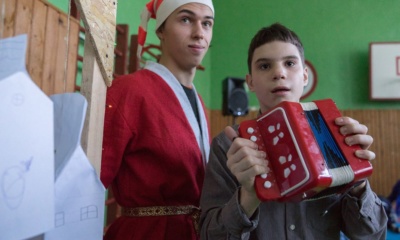Belsky Ustye Winter Camp
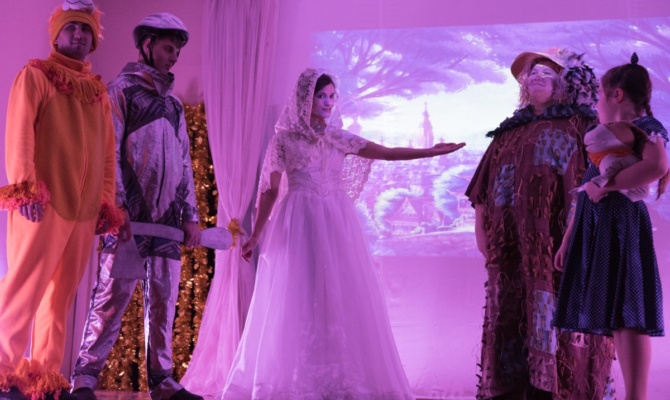
Between 2nd and 7th January, Step Up volunteers led a winter camp for students of the Belsky Ustye orphanage-institution. Highlights include a Great Gatsby themed party, architecture and culinary masterclasses, yoga, fencing lessons, a Christmas market, cinema, educational games and a beauty salon for everyone. All of these activities – and other surprises – really enriched the holidays for these students and our volunteers.
The Step Up centre has been holding summer and winter camps at the Belsky Ustye orphanage since 2013. Step Up volunteers go to a little village in the Pskov region to spend time with children and young adults between the ages of 4 and 28. They hold exciting activities, chat, make new friends, try out new sports and many other things that are part of everyday life for normal children and families.
This winter, nothing changed. A group of Step Up volunteers prepared a week-long programme for students at the Belsky Ustye orphanage. Each day’s programme is unique (this applies to both summer and winter camps); the same activity is never repeated and volunteers always create new, varied possibilities for all.
Our winter volunteers shared their opinions and interesting stories about their experiences of the camp.
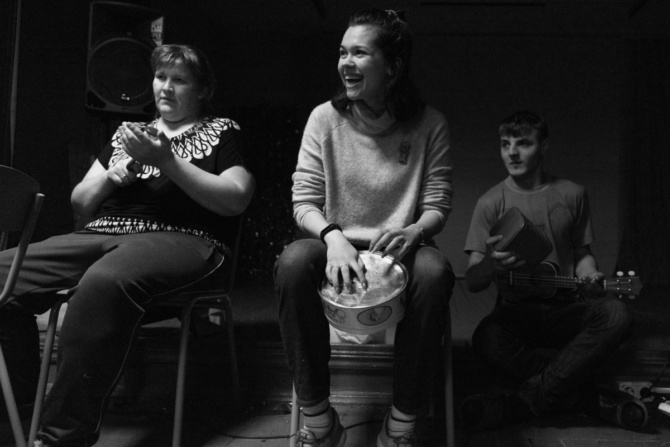
Olga Shestakova, a volunteer, on the musical activities held at the 2018 winter camp
Early in the morning, all of the volunteers go and collect the students to then take them to their first activity. That is, all of them except for me and Zhora. We go to the assembly hall. We look for instruments, move the piano, rearrange the chairs. We practise the song “The Forest Raised a Christmas Tree” and “Wind Comes from the West”. We prepare ourselves for the fact that it might not work because some students will come in wheelchairs, or not particularly aware of what is going on around them. I am preparing to speak loudly and sing, it’s not that simple. Zhora is practising all of the chords in the songs we’re planning on singing.
Read more
— Let’s ask them, what kind of music is there?
— Yes, yes, they’ll say something like “happy and sad” and we can take it further.
When working with children with learning difficulties, you can’t predict anything. Those who are usually shy might suddenly start singing or screaming. And those who usually shout might get carried away with a tambourine, forgetting about everyone and everything around them. You can’t even predict the answer to the question “What kind of music is there?”. The answers we got were: fast, slow, rap, rock, loud, sound, but not happy or sad. Well, one supervisor said happy, but Katya Maksimova said there’s no sad music! It’s amazing.
How did our classes go? ‘Madly’ is probably the most suitable word. Especially in moments of shared joy and with regard to my “Orchestra of strange folk instruments found at Belsky Ustye”. Jars of rice, a drum made from a cookie box, a rattle found in the far cupboard- what else do you need to be happy? A ukulele, piano and students’ smiles.
Music is wonderful in that it has no right or wrong, no winners or losers. You can choose your instrument, you can play loudly or quietly, you can suddenly quieten down, you can rattle, jangle or sing a certain rhythm or melody. You don’t need much to have fun; we convinced ourselves and everyone around us of this. Sometimes, shouting very loudly, like you’ve never shouted before, brings you happiness. Or singing or turning the triangle round to make it sound nicer.
The main thing is that everyone enjoys the process and tries new things. I think we succeeded.
Did you know that there are four verses to the song “Little Christmas Tree Cold in Winter”?
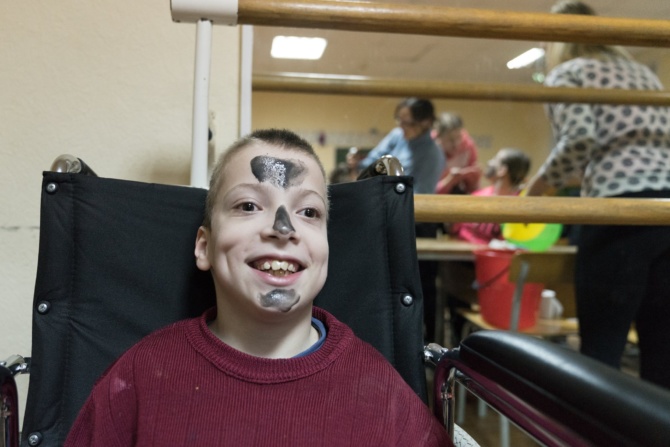
One of the most-loved activities we held was the beauty salon and make-up masterclass. One of our volunteers, Ina, talks about it
The theme of the camp was “A city in the city”. And what’s most important for girls in the city? Beauty salons, of course. So, me and Katusha Popova taught all of the girls how to make themselves beautiful. We did some face masks, we used natural and cosmetic products, we plaited and curled their hair. Everyone loved their results and we also did a facial care masterclass for the boys.
Read more
Lots of people were interested, so we decided to hold this activity on a regular basis – the boys are waiting for new face masks!
Of course, I had no idea whether the students would enjoy this. And in this case, as always, we had a plan B. But, to everyone’s surprise, it was abandoned. I loved telling them all about the different types of skin, about pores and how to properly care for yourself. It was fun to tear off a charcoal face mask and ridding the body of all bad things. It’s nice to look at their well-groomed, glowing faces. I think Katya even seriously thought about a career change…
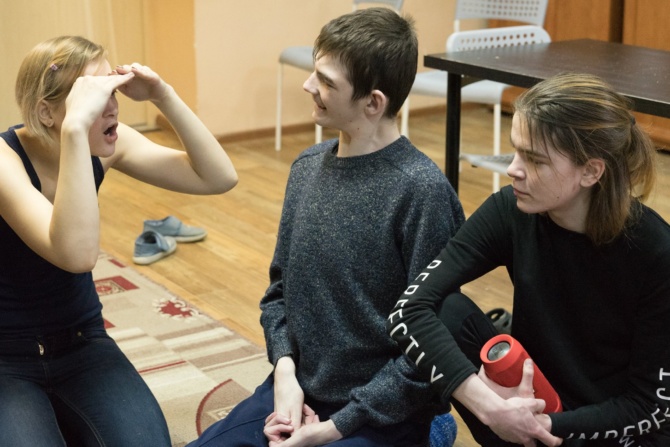
“So everyone stood in a circle and then suddenly lifted their hands in the air… these were educational speech therapy and rhythmic activities with Ekaterina Popova”
We stood up and did a round dance, holding onto one another…Something exciting is always going on. There’s always something new and exciting for each student. Those who can’t see listen, some of them don’t want to listen – well, it seems that those who can see, hear and sing do it all for the rest of them too. This is the miracle of our “algorithm” – that’s what Lena Zakirova, the camp director, calls our speech therapy rhythm.
Read more
As part of the process we learn about fruit, vegetables, animals and birds; we develop speech skills and do motor skill exercises and articulatory gymnastics. But it’s so dry and it doesn’t portray any facial expressions – no smiles or and shakes. But we go and do it, every volunteer interacts with the students and the students find a way to communicate with us.
Play or practise? What’s that – whatever is possible? We did both in our activities, but it was all in a smile – every student will remember our songs in the summer and will sing them with the actions; they will speak to me and ask whether their language has improved; they’ll ask whether we can play speech-related games. And we will play! We’ll sing too!
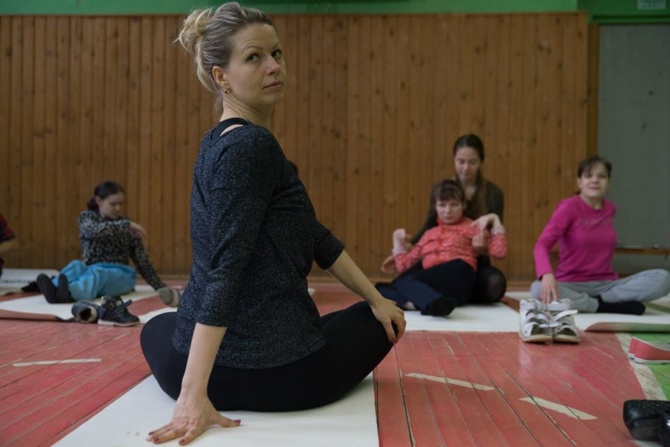
“Inna’s yoga classes at Belsky Ustye”
This story begins two years ago. I had only just started teaching kids yoga then; I went to the winter camp and taught yoga to the youngest age group. I remember how tired they were after the class and how they were captivated when I lit candles and the fact that Nastya Tersinska described the activities in her newspaper article.
Read more
This year I wanted to teach them something new, to look after themselves. So I avoided all talk of yoga. And when they asked me when yoga classes were, I’d jokingly reply: “What? Yoghurt?”
But one day I decided to hold a class for wheelchair users, because I understand that it’s more relevant than ever for them. They aren’t able to go to the sports hall and run after a ball whenever they feel like it. All they can do is go around the orphanage.
A volunteer was assigned to each student: they helped them get into the positions, they held and balanced their spine and provided moral support by simply being there. And I was so happy to be with them, to breathe and relax along with them. I didn’t even realise that we continued for an hour and a half – rather than the 40 minutes we were supposed to do!
I’d like to say thank you to the students for their willingness to learn. Despite the difficulties, they really wanted to learn, experience and try something new. This gave me strength and motivation and of course, the knowledge of what we’ll be doing this summer!
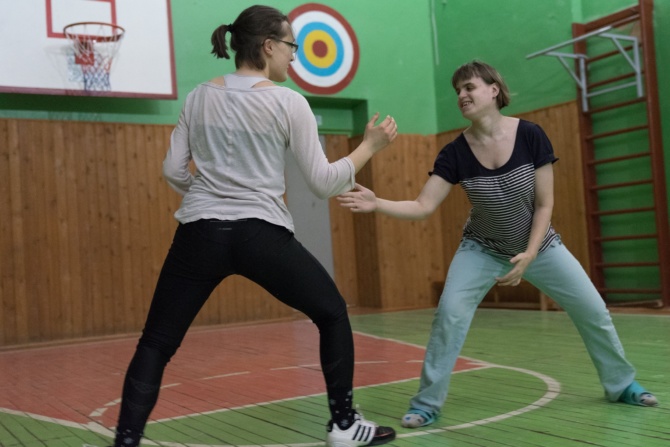
“Philippa’s fencing masterclass”
When it was suggested that I run a fencing masterclass at the camp, I had mixed reactions. Firstly, I was glad that I could have the chance to share my favourite sport with my favourite people. But I was scared. What if it doesn’t go well? What if no one finds it interesting? What if I can’t cope?
Read more
At the first class, I realised that all my fears were justified. Until then, I had interacted with hardly any of the students and therefore, didn’t expect any support from them. Also, I was told right at the last minute that the class would take place in the sports hall, where it’s easy to lose a small group of people.
At first I couldn’t get everyone’s attention and some of the students were just wandering around the hall. At that moment, I thought it would be better to abandon my initial plan and work individually with each of them. Then a group of girls came and everyone began to take part in their own way: one of them came up with a story about a princess being saved, another was just happy to poke others, and some began to learn about the techniques of protection and response.
I later realised that the first lesson was the most difficult – after that, everything became easier. Some of them were interested in fencing, others just in playing with swords.
From the second day, people were approaching me and asking me whether they could fence. I was proud of their progress and I was happy that I could share my favourite sport with these lovely people. Thank you for the wonderful lessons!
Philippa has been fencing professionally for over 20 years; she has taken part in competitions and is a member of the Great Britain national team as well as the London School of Economics team.
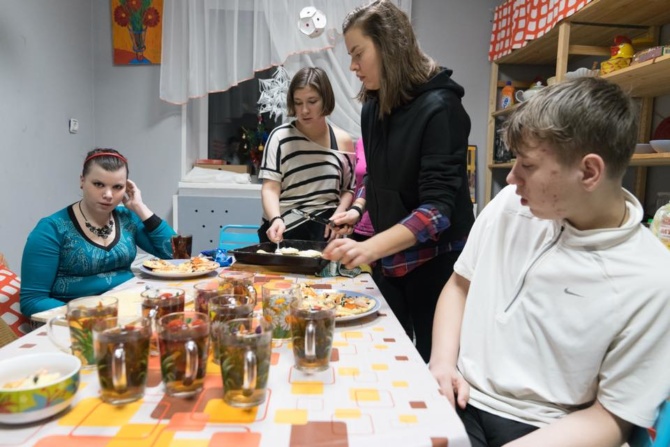
“Katya Fomina’s culinary masterclass”
This wasn’t the first time I led a culinary masterclass for our students, but the strange thing is that I don’t even know how to cook myself. I like to learn alongside them and when it turns out well, I’m just as surprised as they are.
It often seems that the most effective tactic is to give everyone the chance to go through each of the stages of cooking. That is, of course, not true if one person is kneading the dough while the other one makes the filling. Each masterclass participant has a bowl, pours into it a glass of flour, adds butter and sugar, and mixes the dough. I think the most important thing is to give them choice.
Read more
Let’s say we’re cooking pizza. We prepare various ingredients: olives, tomatoes, cheese ham. Each participant can base their work on whatever they want; they can choose how much they want. Even if they just want cheese – it’s their choice.
At the camp, as well as pizza, we made cookies and pasta with various sauces. Again, they each had the choice to decorate the cookies however they wanted. As for the pasta, we had different types, and we used a variety of spices and flavours for the sauces – many of them for the first time. Turmeric surprised them the most, because it makes the sauce yellowish. And of course, they all loved the traditional tomato sauce.
Of course, I wouldn’t have been able to keep the students’ attention or spend time with each of them if I were alone, so thank you to all of the volunteers who helped me and shared these culinary discoveries with me. It’s great when the pizza is almost ready, there’s an appetising smell permeating the corridor. Volunteers and children flock towards the kitchen to try our cooking. For me, the culinary masterclass is inspiring. In the past, it has gone wrong: green muffins and sushi rolls falling apart. But time after time, I see the students’ interest and progress. And the best thing? They know more culinary life hacks than we do – they teach us!
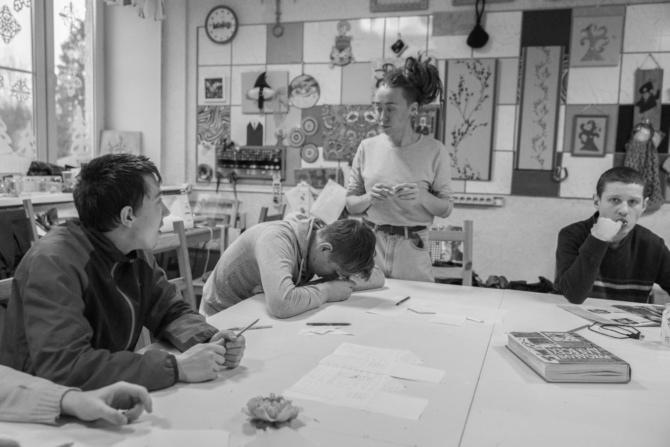
“Maria Zhestkova’s architectural masterclass”
It’s the end of December. I’ve got a lot of work on. I have to finish a project on a big Asian plan. Time is ticking. I never sleep. Thoughts are running through my mind: “Belsky Ustye! A masterclass!”. Working, not sleeping. “Materials!” Editing. Round the clock. Working. Ah! New Year’s Eve – shops are closed, can’t get the cardboard, there’s nothing to take and I’m already on the train. “That’s it!”
Read more
Well. Impromptu: the genius of pinterest and an infinitely inspiring fact – that’s what we do it all for.
And they have paper, scissors, pencils, hands, artistic flair, openness, curiosity, sincere job, amazing obedience with their class hierarchy system (they have people ‘observing the order’), and love. That’s all!
And it works! We made houses (milk cartons) and larger ones with light bulbs. We did a pantomime game about the history of design; the team was me, Misha, Artem, Andrew, Valeria, Peter, and the rest.
It was a very happy holiday.
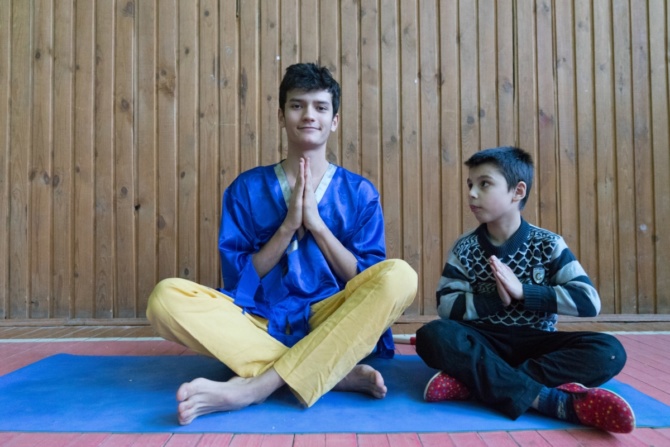
“Aleksei Krasilnikov, a Step Up student and winter camp volunteer, on what the camp did for him”
Once upon a time, this place, these children and this building came into my life. There are three reasons why I want to come back again and again: firstly, the children always wait for you. Secondly, you can realise the true meaning of life when you’re there and thirdly, so that I can be with myself, I can stand back and take a look at my own ego.
Read more
I’ll tell you three stories about my life.
1) The orphanage. I lived there for 15 years. A lovely lady called Lyubov Alexandrovna raised me. That’s where I learned to love others.
2) My foster family. I lived with them for three years. Again, I learnt to love others. I became wiser, more mature, started thinking and acting differently.
3) Belsky Ustye. That’s where I got to know students with difficulties and where I had my first volunteering experience. It’s with the students there that I learn to be happy and kind, to value every moment in life.
Why do I keep going back? I see the students’ progress when we give them the choice; they can decide whether they want to go to the beauty salon or the cinema, to fencing or ballet, yoga or music class.
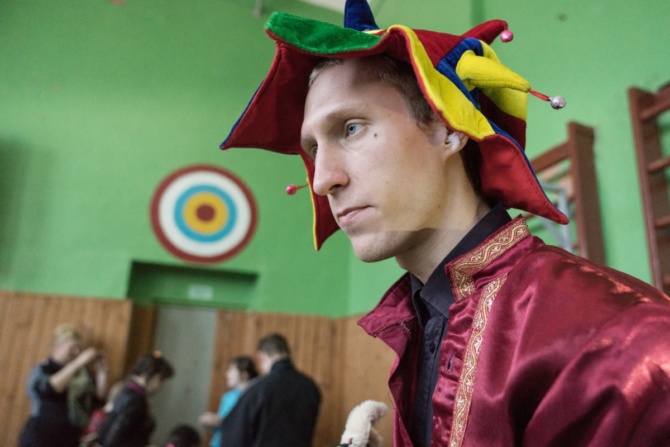
“Andrei, a volunteer, on the Christmas market at Belsky Ustye”
It’s the last day of the Belsky Ustye winter camp. There’s a bit of snow, sun and a blue sky. We make a Christmas market for the children. Immediately afterwards, we leave for the station but it’s wonderful to say goodbye on such a bright, kind note.
We dress up in carnival costumes: Chinese gowns, masks, angel wings, caps, New Year hats, folk dress. We take cookies and compote with us. Students can try out fencing, they can solve riddles, take part in mini sports competitions, practise yoga, try out a crystal ball and eat Christmas cookies.
Read more
There’s a holiday atmosphere and energy; students are happy and smiling. In line with the traditions of the Belsky Ustye 2018 winter camp, they choose their own activity: fencing, yoga, fortune-telling, juggling, bowling.
Each volunteer picks up their group at the ‘station’ – there are lots of special meetings and happy moments. Students don’t choose what’s happened to them; they need to feel trust and sympathy towards those they interact with. By the end of it all, there is toilet paper wrapped up by volunteers – it’s the final climax. It turns into a salute as it flies into the air, wraps around people and bursts into confetti.
All of the small meetings are part of one large one, which began with an enchanting disco a week ago and ends with an equally fantastic fair today.
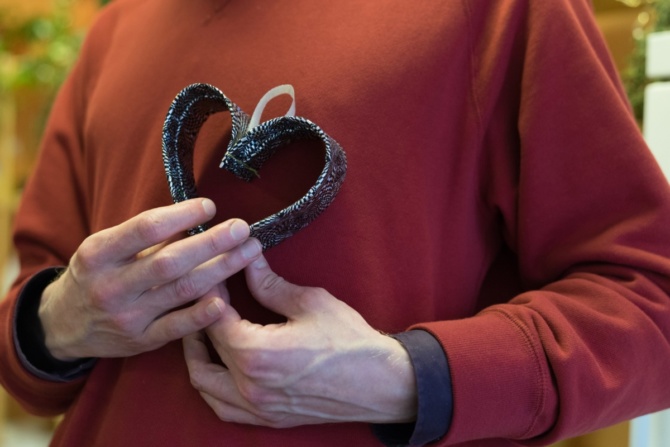
“How the students earned points and received gifts at the Christmas fair, told by our Belsky Father Frost, Ilya Kuznetsov”
At the end of December, in the holiday rush, we were preparing for the Belsky Ustye winter camp when people came to our Centre with a large paper bag from Santa Claus. In the bag were gifts wrapped by pre-school children at School number 1231; it was part of the programme “A box of good deeds”. Every gift was packed by a child’s hands and heart, with some help of their parents and teachers. In addition to these gifts, we took video messages from Moscow to Belsky with us.
In the midst of the Christmas fair, the students enthusiastically earned points by taking part in activities thought up by our volunteers. The reward was the gifts and video greetings we had brought with us from the pre-school kids in Moscow. That is what happened; that was the New Year.
Read more
It was the last day of camp, the sunniest and snowiest day of the whole week. We got ready quickly – just a few minutes to prepare the ‘tokens’; volunteers cut them up and that was that. All that was left was to choose an outfit for the seller to take the gifts in and then we could go on. Here’s what happened (it was very chaotic 🙂
We could not, and did not create a list of how much things cost, because all the children are very different, and the value of each token was very different depending on who brought it to you. Therefore, the inflation was a problem. The first thing we bought was a tin box with sweets, the most expensive thing)) – 20 tokens gone already. After this, it was calm for five minutes, as no one else realised that they could buy anything and everyone was spending their hard-earned tokens on compote and cookies.
But it was gone, and the children flowed with the river trying to get me chocolate bears and hares for three tokens, or even one. But I didn’t give them to anyone for less than 7, so many left to get more. The hardest part was giving slippers, since they had to be the size of the buyer. But they were sold- for 18 tokens. As a result, everything was gone in 20-25 minutes.
On average, children took two attempts to bargain and succeeded on the third, having already collected the right amount of money to choose and purchase something. For the children themselves, in my opinion, this was very unusual and interesting, because they are not generally very successful in situations where they can “earn” and choose what they want. I’m very glad that we managed to do something similar.
